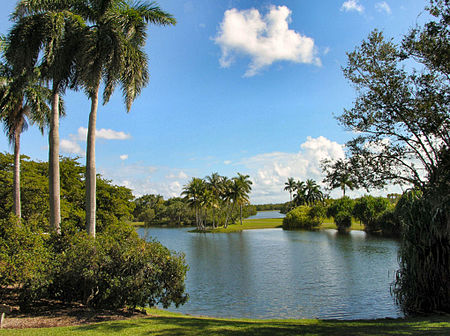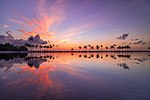Fairchild Tropical Botanic Garden
1938 establishments in FloridaBotanical gardens in FloridaBuildings and structures in Coral Gables, FloridaCoral Gables, FloridaMuseums in Miami-Dade County, Florida ... and 5 more
PalmetumParks in Miami-Dade County, FloridaProtected areas established in 1938Protected areas of Miami-Dade County, FloridaVague or ambiguous time from December 2017

Fairchild Tropical Botanic Garden is an 83-acre (34 ha) botanic garden with extensive collections of rare tropical plants including palms, cycads, flowering trees, and vines. It is located in the city of Coral Gables, Miami-Dade County, just south of Miami, surrounded at the north and west by Matheson Hammock Park. Fairchild opened to the public in 1938.Fairchild is a museum, laboratory, learning center, and conservation research facility whose main role is preserving biodiversity. It has 45,000 members and more than 1,200 volunteers. In 2012, Fairchild became the home of the American Orchid Society.
Excerpt from the Wikipedia article Fairchild Tropical Botanic Garden (License: CC BY-SA 3.0, Authors, Images).Fairchild Tropical Botanic Garden
Old Cutler Road,
Geographical coordinates (GPS) Address Phone number Website Nearby Places Show on map
Geographical coordinates (GPS)
| Latitude | Longitude |
|---|---|
| N 25.678662 ° | E -80.273742 ° |
Address
Fairchild Botanical Garden
Old Cutler Road
33156
Florida, United States
Open on Google Maps








